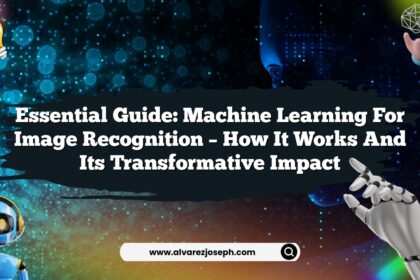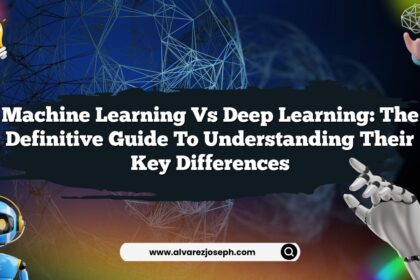Imagine you’re standing on the edge of a vast and intriguing landscape, where every turn offers a new opportunity to learn, grow, and innovate. Welcome to the world of machine learning. Whether you’re a curious beginner or someone who’s simply looking to dip their toes into this fascinating field, it’s normal to feel a mix of excitement and trepidation. But fear not! This guide is designed to turn your curiosity into competence and help you start your journey with confidence today.
The first step into machine learning can feel like stepping onto a roller coaster. It’s thrilling, a bit intimidating, and just when you think you’ve got the hang of it, there’s a new twist or turn. But what if I told you that mastering these twists is entirely possible? What if I whispered that machine learning is less about magic and more about understanding the patterns and data that surround us every day? Intrigued? You should be!
Understanding the Basics of Machine Learning
Machine learning is like the secret sauce behind many of today’s technological marvels. From personalized recommendations on your favorite streaming service to the voice-activated assistants in your home, this field is reshaping how we interact with technology.
At its core, machine learning is a subset of artificial intelligence that enables computers to learn from and make predictions based on data. It’s like teaching a child to recognize patterns, but instead of using words and pictures, you’re using numbers and algorithms. Sounds like a tall order? It doesn’t have to be.
What Exactly is Machine Learning?
Machine learning involves training a model on a dataset, which essentially means feeding it a bunch of examples so it can learn to make decisions or predictions. Imagine you’re teaching a pet parrot to speak. You repeat words until the parrot starts mimicking them. Similarly, you provide data to a machine learning model until it starts recognizing patterns.
There are three primary types of machine learning:
- Supervised Learning: Here, the model learns from labeled data. It’s like having a cheat sheet while learning a new language.
- Unsupervised Learning: The model finds patterns in unlabeled data. Imagine uncovering hidden symmetries in a kaleidoscope.
- Reinforcement Learning: Think of this as training a puppy. The model learns through trial and error, receiving rewards or penalties based on its actions.
Why is Machine Learning So Important?
Machine learning is not just a trend; it’s a revolution. It allows businesses to make sense of massive amounts of data and extract valuable insights. Imagine being able to predict stock market trends or personalizing marketing strategies with surgical precision. The possibilities are endless.
Getting Started with Machine Learning
Starting with machine learning may feel like climbing Everest. But, with the right tools and mindset, the summit is closer than you think. Let’s break it down into manageable steps.
Essential Tools and Libraries
When it comes to machine learning, tools and libraries are your best friends. Here are a few you can’t do without:
- Python: The go-to programming language for machine learning. It’s versatile, easy to learn, and has a vast community.
- NumPy: Think of NumPy as the Swiss Army knife for numerical computations in Python.
- Pandas: A data manipulation library that makes handling datasets a breeze.
- Scikit-learn: A user-friendly library for implementing basic machine learning algorithms.
“The journey of a thousand miles begins with one step.” – Lao Tzu
Setting Up Your Environment
Before you dive into coding, you need to set up a conducive working environment. Think of this as setting up your lab before conducting an experiment.
- Install Python: Make sure you have the latest version of Python installed.
- Set Up a Virtual Environment: This keeps your project dependencies isolated.
- Install Essential Libraries: Use pip to install libraries like NumPy, Pandas, and Scikit-learn.
Finding the Right Dataset
Your dataset is the foundation of your model. Finding a good one can be like finding a needle in a haystack. Websites like Kaggle and UCI Machine Learning Repository offer a plethora of datasets to experiment with.
Building Your First Machine Learning Model
Now that you have your tools and dataset, it’s time to build your first model. This is where the magic happens.
Data Preprocessing: The Crucial First Step
Before you can even think about training a model, you need to preprocess your data. It’s like preparing ingredients before cooking. Missing values, inconsistent formatting, and outliers are just a few things you’ll need to address.
Choosing the Right Algorithm
Choosing an algorithm is like choosing the right vehicle for a journey. You wouldn’t use a bicycle for a cross-country trip, and the same logic applies here. Some of the most common algorithms include:
- Linear Regression: Great for predicting continuous values.
- Decision Trees: Useful for classification tasks.
- K-Means Clustering: Perfect for unsupervised learning.
Training Your Model
Once your data is preprocessed and you’ve chosen your algorithm, it’s time to train your model. This involves feeding your data to the algorithm and allowing it to learn the patterns.
“You don’t have to be great to start, but you have to start to be great.” – Zig Ziglar
Evaluating Model Performance
After training, it’s crucial to evaluate how well your model performs. Accuracy, precision, and recall are just a few of the metrics you can use. Remember, a high-performing model is not just accurate but also generalizes well to new data.
Fine-Tuning and Optimization
Fine-tuning is where the magic happens. Tweak hyperparameters, explore different algorithms, and validate your model with different datasets to see what works best.
Deployment and Real-World Application
Once you’re satisfied with your model’s performance, it’s time to deploy it. Deployment might seem daunting, but with platforms like AWS, Google Cloud, and Microsoft Azure, you can get your model up and running in no time.
Challenges and Pitfalls in Machine Learning
Embarking on a machine learning journey is not without its challenges. But knowing what to expect can make all the difference.
Common Mistakes to Avoid
- Ignoring Data Preprocessing: Good models rely on good data.
- Overfitting: A model that’s too complex may perform well on training data but poorly on unseen data.
- Neglecting Model Evaluation: Always validate your model against a test dataset.
Staying Up-to-Date
Machine learning is a rapidly evolving field. Staying informed about the latest research and tools is crucial. Engage with online communities, attend webinars, and never stop learning.
The Future of Machine Learning
The future is bright for machine learning. As computing power increases and algorithms become more sophisticated, the possibilities are boundless. Imagine a world where self-driving cars are the norm, personalized medicine tailors treatments to individuals, or climate models predict environmental changes with unprecedented accuracy.
Quick Summary
- Machine learning is crucial for extracting valuable insights from large datasets.
- Essential tools include Python, NumPy, Pandas, and Scikit-learn.
- Preprocessing data is vital for building effective models.
- Choose the right algorithm based on your specific task.
- Evaluate your model’s performance using metrics like accuracy and precision.
- Avoid common pitfalls like overfitting and ignoring data preprocessing.
- Stay informed about the latest developments in the field.
- The future of machine learning holds exciting possibilities.
Frequently Asked Questions
What is the difference between supervised and unsupervised learning?
Supervised learning uses labeled data to train models, while unsupervised learning finds patterns in unlabeled data.
Why is data preprocessing important?
Preprocessing ensures that your data is clean and formatted correctly, leading to more accurate models.
What are some common algorithms used in machine learning?
Common algorithms include linear regression, decision trees, and K-means clustering.
How can I evaluate my machine learning model?
You can evaluate your model using metrics like accuracy, precision, recall, and F1 score.
What are the biggest challenges in machine learning?
Challenges include data quality, overfitting, and staying up-to-date with the latest advancements.
How can I deploy a machine learning model?
You can deploy models using cloud platforms such as AWS, Google Cloud, or Microsoft Azure.
Remember, machine learning is a journey. Every step you take brings you closer to mastery, and with persistence and curiosity, you’ll find yourself navigating this fascinating landscape with ease. Keep exploring, keep learning, and who knows? You might just discover the next big breakthrough.












